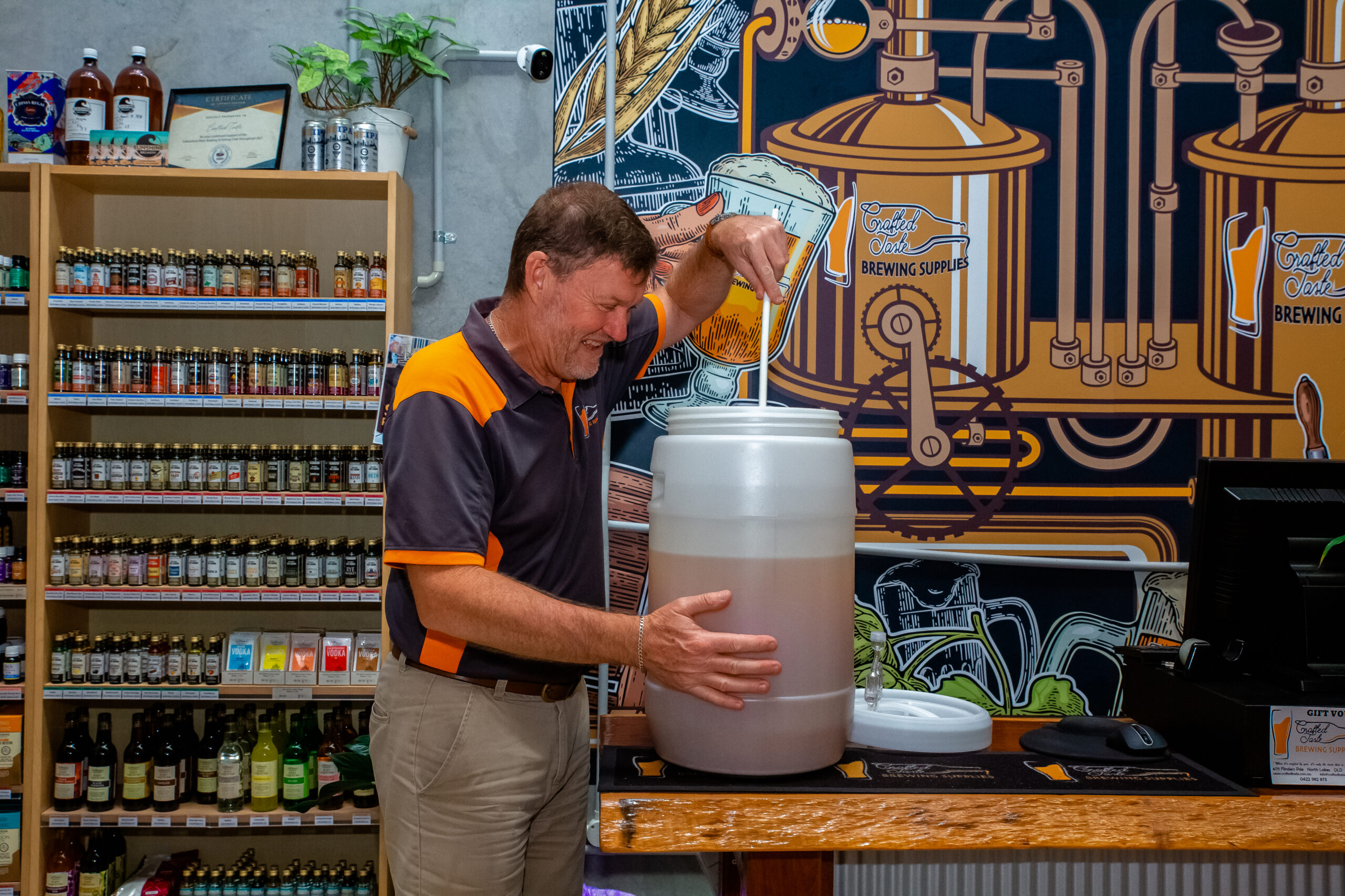
Home brewing beer is an easy and rewarding hobby. Regardless how long you’ve been brewing, there may be some questions that you have about your brewing. Below we have detailed some of the common brewing beer FAQs.
The airlock isn’t bubbling, is the yeast working?
Just because the airlock is not bubbling doesn’t mean that your brew isn’t fermenting. In most cases, the CO2 (which is a by-product of fermentation and what causes the airlock to bubble) is escaping through a gap around the seal of the fermenter lid. You can try and rectify this by loosening the fermenter lid, quickly repositioning the lid and screwing it back on. There is no need to excessively tighten the lid.
Do I really need to use a hydrometer?
A hydrometer is a useful tool for 2 reasons – to calculate the ABV and to confirm your brew has finished fermenting. If you want to calculate the ABV of your beer check out our ABV Calculation. The hydrometer helps you to determine there is no unfermented sugars left in your brew. The consequence of leaving unfermented sugar in your brew is a sweeter beer, lower alcohol or excessive CO2. Too much CO2 can result in bottled beer which is over carbonated or explosive bottles.
What temperature should I ferment my brew?
The temperature you brew at is determined by the yeast you use. All yeasts will have a temperature range which is detailed on the beer can/pouch or on the back of the yeast packet. Typically, ale yeasts will have an ideal temperature of 18-25˚C and lager yeasts between 8-15˚C. Kveik yeast can be used when brewing at a higher temperature as this yeast ideal is between 20-40˚C. Check out our Yeast Chart if you’d like to see our full range of yeasts and their brewing temperatures.
How long will it take to brew my beer?
Usually it takes around 7 days for your beer to finishing fermenting. Brewing time is dependent on the yeast used and the temperature you have brewed at. For example, a lager brewed at the ideal 12˚C can take approximately 4 weeks. Conversely, a beer brewed with Kveik Yeast at 35˚C can take as little at 3 days. As a general rule, allow 7 days for fermentation and use your hydrometer to confirm fermentation is complete before moving on to bottling and kegging.
I’ve used my hydrometer, my beer has been down for a week and my brew has not fermented. What do I do?
This may occur if you have used yeast that is out of date or the temperature you have fermented at is too high or low. If the yeast was out of date, you can simply add an additional pack of yeast and let your brew ferment. If the brewing temperature has been too high, you may still be able to pitch another yeast and ferment it within range. Keep in mind however, that your beer may contain ‘off flavours’ due to the original high fermentation temperature. If your temperature is too cold then you can restart fermentation by warming your brew up using a heat mat, heat belt, or simply a blanket. In some cases, the pH of your brew may be too low and that has resulted in fermentation not occurring, although, this is generally not an issue when extract brewing.
My beer looks cloudy in the fermenter, is it okay?
Yes, it is common for your beer not to be clear in the fermenter. If you are bottling then the priming time in the bottle will assist in clearing the beer. Allow a minimum 2 weeks at room temperature for bottle priming. Once the bottles are then refrigerated, the beer will clear further and the sediment will be seen in the bottom of the bottles. To ensure your beer stays nice and clear, be careful not disrupted the sediment when pouring your bottled beer. If you are kegging follow our cold crashing instruction which are detailed on our ‘Guide To Kegging’ blog post.
I would like to add Hops into my beer, how do I do this?
Hops are a great addition to add flavour and aroma into your brew. We stock finishing hop tea bags and 50g bags of hops. Hops can also add bitterness to your brew, so we suggest dry hopping for 2 days. 2 days ensures you get the flavour and aroma of the hops without the bitterness. If you are using the tea bags, simply add the hop tea bag into your brew 2 days before bottling or kegging. If you would like a bit more ‘omphh’ then the 50g bags are a great addition, just make sure you use a hop sock to keep all those hop contained.
We hope that our beer brewing FAQ’s helps you on your brewing journey. Have a question we have missed? Let us know, we are always happy to help!
